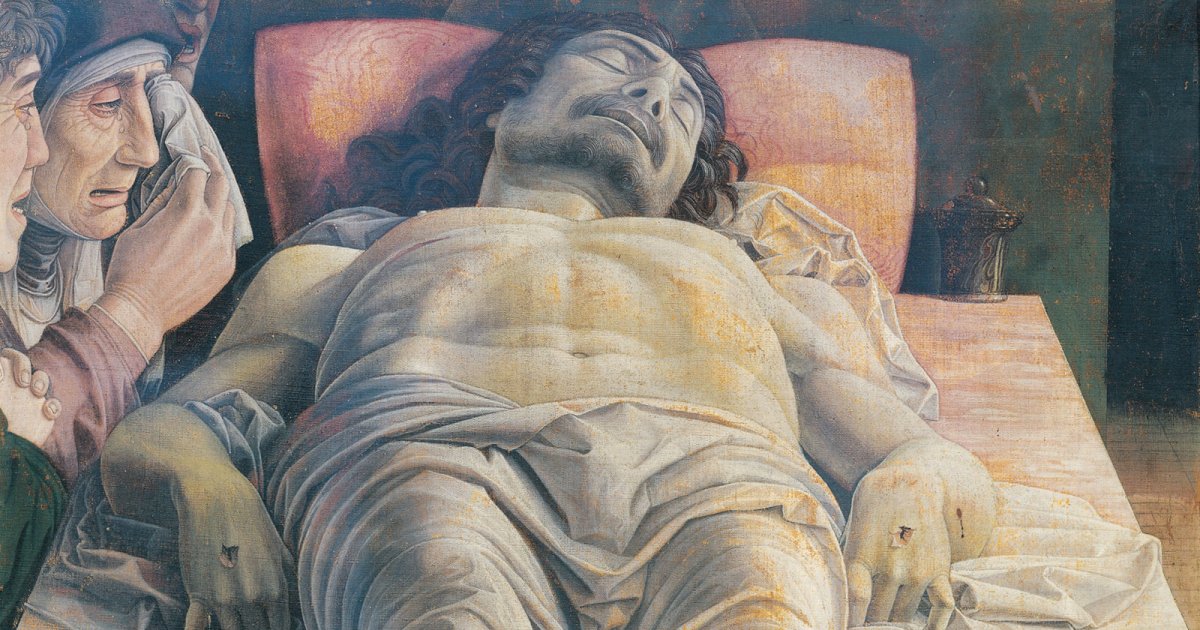BRERA, A. Mantegna - Dead Christ
 Language: English / USA
Language: English / USA
You are standing before one of the most important paintings of this museum, which has also been voted as the most popular with visitors. Yet it certainly isn't a cheerful painting. It requires special care in its exposition thanks to its extremely delicate colors, its dramatic subject, and the impressive virtuosity of its perspective. Surely the fact that it's located in the center of a long and relatively narrow hall with specially colored walls and lighting enhances it further.
Dead Christ is an extraordinary painting not only for its beauty, but also because it is one of the rare works of the fifteenth century that is painted on canvas and not on wood. If you are amazed by the dull tones of its colors and lights, don't forget that the scene is set within a room, and at twilight.
It was painted by Andrea Mantegna in the last years of his life, shortly after 1500, and it would seem that he painted it to decorate his funerary chapel. However, when the painter died his children were forced to sell it to pay off the debts he had left.
The body of Christ, washed, sprinkled with unguents and prepared for burial, lies on a cold table of reddish marble known as the "Anointing Stone," which is particularly emphasized in the painting. In fact, precisely in Mantova where Mantegna died, a sliver of this slab of marble from the Holy Sepulchre of Jerusalem is preserved as a relic.
On the far left of the scene you can see a glimpse of other characters intensely marked by sorrow: Mary is in tears, much older than she usually appears in the crucifixion scene, the apostle John is wringing his hands, and there is a third figure, perhaps Magdalene, of which we can only see a small portion of her face.
FUN FACT: If you look at the painting carefully, you can see that it doesn't perfectly follow the laws of perspective. In a "realistic" representation, Jesus' feet would need to be larger, but that would have risked ridiculing him. Mantegna therefore deliberately chose to make them smaller.



